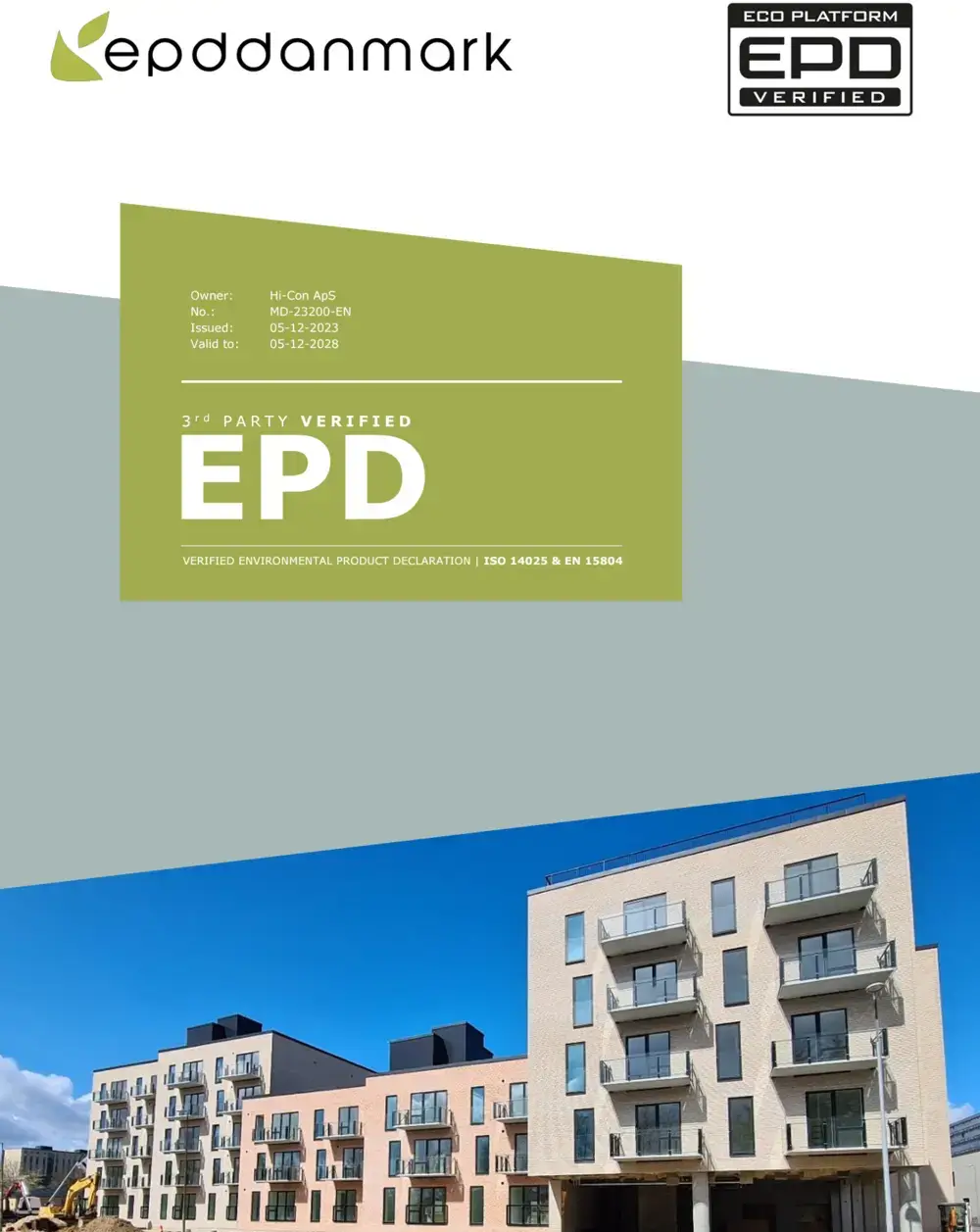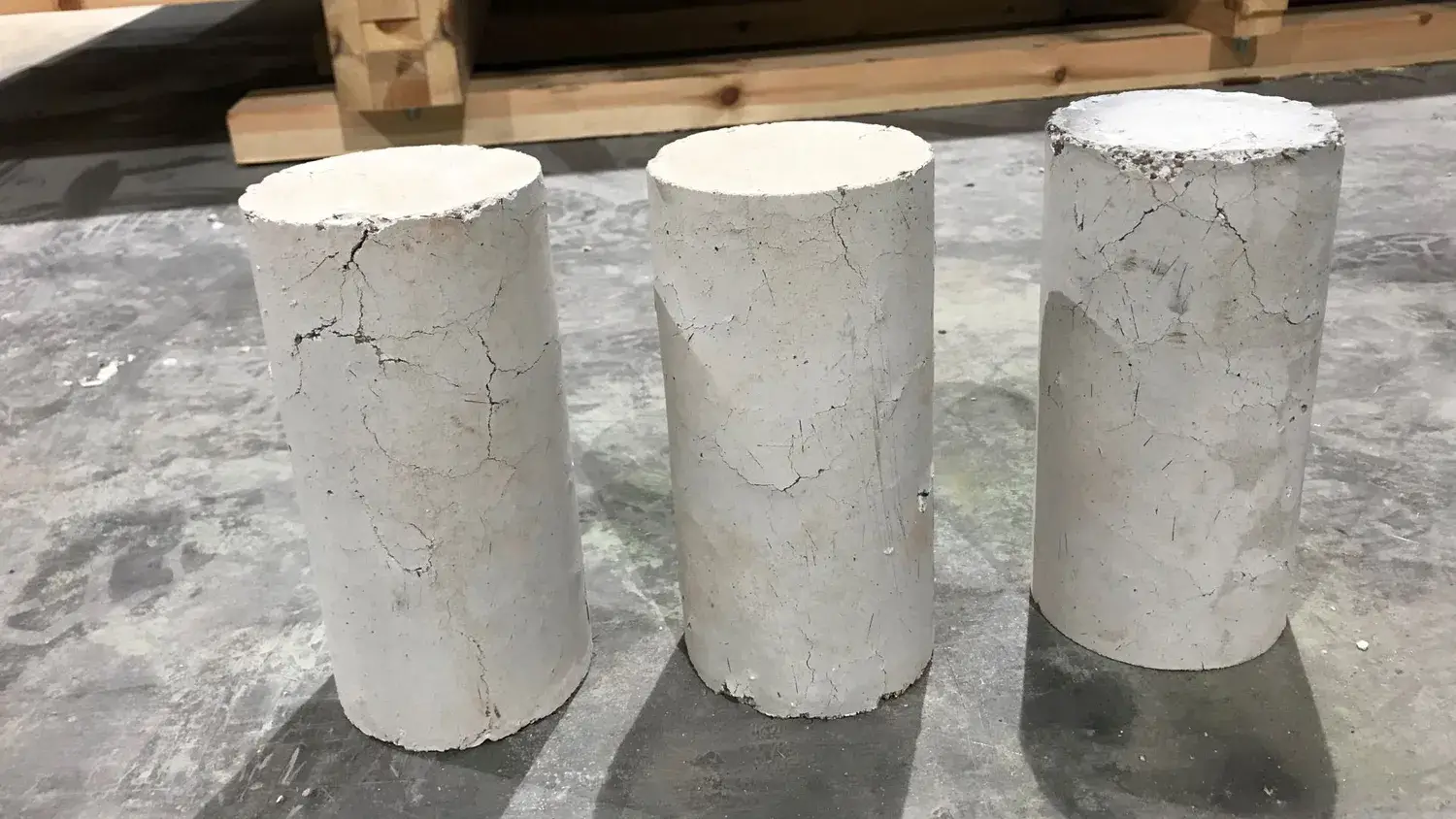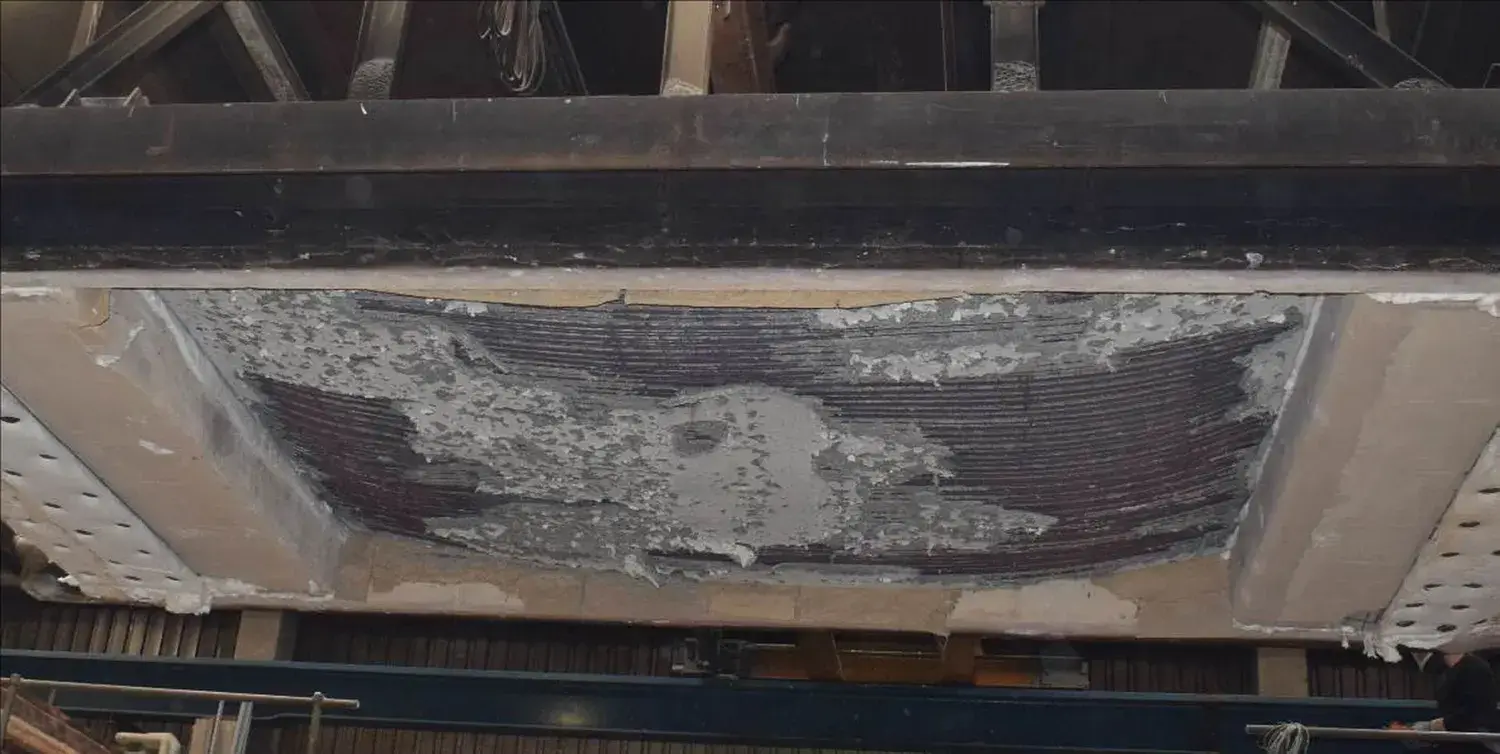
20. December 2023

In this post, we share some of the results from a full-scale fire test of UHPC elements. The results are from a test of a supported slab.
Fire resistance is certainly a challenge for Ultra High Performance Concrete (UHPC). If the content of fine particles in the concrete is high (which leads to relatively impermeable concrete), it can even be a problem at compressive strengths as low as 55 MPa, as addressed in the Eurocode system.
As described in our previous posts, we have obtained extensive documentation regarding spalling and fire resistance—including tests on slabs, beams, columns, and wall elements—but only one full-scale test under fire load has been performed on a balcony element. This was a cantilevered balcony element tested at Tampere University in Finland.
While cantilevered balconies represent the majority of our balcony projects, we also decided to perform a full-scale test on a simple supported slab, as we could expect less favorable results for this type of test—this will be explained below:
In both types of fire tests, the top of the slab was unexposed, while the bottom of the slab was exposed to a standard fire. This means that the tensile bars in the cantilevered slab are relatively well protected from the fire, as they have a 15 mm cover from the top of the slab, and the slab had a thickness ranging from 85 to 75 mm. For the supported slab, the tensile bars are at the bottom and thus only protected from the fire by their 15 mm cover. This will naturally result in faster heating of the reinforcement bars in the supported slab and consequently a reduction in strength at an earlier stage of the fire test.
In both types of slabs, the load is placed on top of the slab, leading to deflections. As the slabs heat up, deflections will increase, partly because the stiffness of both concrete and steel is reduced, and partly due to thermal creep. However, there is another effect to consider: as the bottom of the slab heats up while the top remains relatively cool, the bottom will expand quickly, while the top remains relatively undisturbed. This introduces a curling effect, which in this case will cause the edge of the slab to rise—and in the early stages of the fire, this effect will add a greater component than the downward deflection caused by the load. For the cantilevered balcony, the edge did not move down after the initial deflection until it had been exposed to fire for 90 minutes. For the simple supported slab, both the effect of the load and the differential heating will increase the deflection, meaning the deflection in the middle of the slab can become quite significant.

As mentioned earlier, there were several reasons why we expected a worse reaction from the supported slab compared to the cantilevered slab. The cantilevered slab had supported the full load during two hours of fire exposure. The test was halted because the setup could not handle the deformations.
The supported slab was tested at the Danish Institute of Fire and Safety Technology, where we achieved an REI60 classification.
The slab had a thickness of 100 mm, a span of 4140 mm, and a width of 3000 mm with free edges on both sides. It was loaded at two points as shown in Fig. 5, with a total load of 31 kN. Considering the dead weight, this resulted in a maximum moment of 5.89 kNm/m and a maximum shear force of 5.69 kN/m.
We did not anticipate the deformations to be as significant as they turned out to be, so the load applied was not ideally suited for such large deflections. As the slab bent, stress built up at the load points, and when these stresses were released several times during the test, the slab almost "exploded."
Ultimately, the test was stopped after one hour due to significant deflections (233 mm mid-span deflection), making it impossible to continue applying the load to the slab. This situation mirrored the cantilevered slab test, where the slab remained largely intact but the setup could no longer accommodate the extensive deflections, even though failure criteria based on deflections had not yet been met.
Numerous thermocouples were embedded in the slab, providing valuable data to enhance our fire design capabilities, which is as crucial as the slab's classification achieved for documentation purposes. However, we still face challenges, particularly in accurately predicting deformations.
Do you have any questions?
Interested in learning more about ultra high-strength concrete?
FILL OUT THE FORM AND WE'LL GIVE YOU A CALL